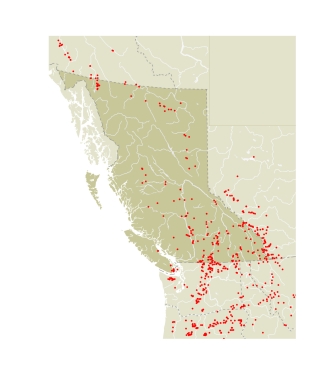AdultWhere the Field Crescent is sympatric with the Pearl Crescent, it is sometimes confused with the latter, especially females. The male Field Crescent lacks a purple flush on the margin of the ventral hindwing, and the crescent is the same colour as the ground colour of the Tawny Crescent. Both sexes have much more black in the median region of the dorsal hindwings than the Pearl Crescent.
Immature StagesThe larvae are a darker brown than the two preceding species of aster-feeders. Emmel and Emmel (1973) describe the mature larva as black with numerous branching spines. There is a dorso-lateral greyish white band, and a yellowish brown band below the spiracles.
SubspeciesBC populations are the nominate subspecies, P.p. pratensis (Behr, 1863) (TL: San Francisco, CA). Scott (1994) attempted to separate the southwestern YT and adjacent AK populations into a separate subspecies, but was apparently unaware that the species occurs continuously south from southwestern Yukon with no known distinct break that would justify setting up a separate subspecies.
